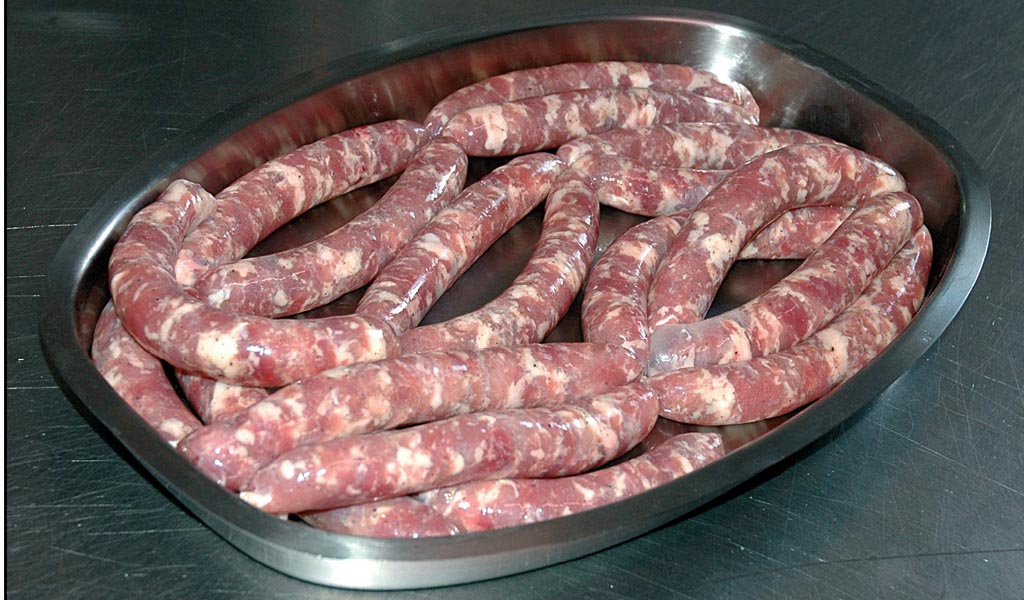Prodotti tradizionali
cervellatine

La salsiccia di maiale in Campania si presenta spesso più lunga e più sottile rispetto al resto d'Italia, in questo caso viene chiamata "cervellatina"; l'etimologia del suo nome proviene, verosimilmente, dal francese cervelas, cervello, che anticamente figurava fra i suoi ingredienti. Oggi viene confezionata esclusivamente con carne fresca di maiale grassa e magra, macinata grossa o addirittura tagliata con il coltello (in punta "'e curtiello"), sale e spezie essiccate, tra le quali spicca l'abbondante peperoncino. Conserva, però, la sua caratteristica tipica che la vuole di un diametro di circa 1-2 centimetri e una lunghezza che può arrivare al metro. La sua preparazione prevede che la carne macellata venga poi frollata, triturata e mescolata con aromi vari, soprattutto pepe nero, per poi essere asciugata e insaccata in budella suine molto sottili e legata con spaghi in fibra vegetale. Il prodotto è ampiamente conosciuto e diffuso in tutta la regione e si può acquistare in tutte le macellerie, sia nei piccoli centri che nelle grandi città.
Pig sausage in Campania is usually longer and thinner than in the other parts of Italy, and it is called "cervellatina"; the etymology of the name is probably French from "cervelas", brain, and an ingredient in ancient times. Today the sausage is made exclusively of the fat and lean parts of pig meat, either ground in big pieces or event cut (on the tip "'e curtiello" of the knife), with salt and dried spices, amongst which a lot of chili peppers. It keeps its typical characteristic though, a diameter of 1, 2 cm and a length of even a whole meter. The preparation is to butcher the meat, ground it and mix it with aromas, especially black pepper, it is then dried and made into sausages with very thin pig intestine. It is tied with vegetable fiber cord. The product is very common and famous in the whole region and it can be purchased in every butcher shop, both in the small towns and the big cities.